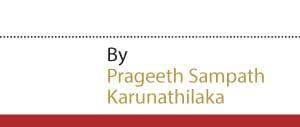16 Dec 2022 - {{hitsCtrl.values.hits}}

There are allegations that certain senior officials retiring from certain government institutions are entitled to a pension and unlimited allowances
- According to informed sources some individuals are receiving a pension amounting to 745000 rupees
- In 1958, the bank employees became entitled to a pension and the EPF based on the award called ‘Thalgodapitiya’
- There is a fund of more than 50 billion rupees to pay bank employees their pensions
- According to the COPE report the outstanding pension of one retired executive alone was Rs 37000000
The age an individual must reach to be sent into mandatory retirement was amended to sixty years from the earlier specified age of sixty-five. Keeping with this change many employees in government institutions will have to retire. There are allegations that certain senior officials retiring from certain government institutions are entitled to a pension and unlimited allowances. Those in Grade I and above in public service are reportedly allowed such pensions with special privileges. According to informed sources some individuals are receiving a pension amounting to 745000 rupees.
government institutions will have to retire. There are allegations that certain senior officials retiring from certain government institutions are entitled to a pension and unlimited allowances. Those in Grade I and above in public service are reportedly allowed such pensions with special privileges. According to informed sources some individuals are receiving a pension amounting to 745000 rupees.
Former Bank of Ceylon Chairman Rusiripala Tennakoon pointed out that certain senior officers of state banks, corporations and boards are entitled to pensions in this way. State bank employees are also entitled to EPF/ETF. In 1958, the bank employees became entitled to a pension and the Employees’ Provident Fund based on the award called ‘Thalgodapitiya’. As a result of the movement led by Bank Employees’ Union Chairman A. A. Gunasinghe, at that time, the Labour Tribunal recommended offering pensions to the bank employees and it was legalised. According to Tennakoon, it is called the Thalgodapitiya Award.
There are several key points related to this law. This pension should be something other than a pension granted by the bank management at its discretion. It is a legitimate right. When this law was implemented, there were only foreign and private banks in Sri Lanka. State banks did not exist then. But this award created history. The other thing is that this pension should be paid uniformly to all the bank employees. All employees of banks were entitled to a pension in keeping with this law; it was not given at the discretion of an authority. In the case the employees receive any kind of retirement or end-of-service allowance (EPF/ETF), which is paid legally or at the discretion of the management, they are still entitled to this pension. The Employees’ Provident Fund Regulations came into being in 1958. But when the Thalgodapitiya Award was enacted the EPF regulations were not enacted. But the bank management was paying the EPF. Therefore, it was declared that a pension should be delivered in addition to that allowance. With that bank employees were entitled to retirement and the EPF entitlement. This pension entitlement was declared utilizing a formula. That formula according to Rusiripala Tennakoon is N+5×G÷60.
N is the number of years served. +5 is an additional service period of five years added to retirement. ×G is the average value of the gross salary earned during the last three months. This is divided by 60 because 60 is the retirement age. The formula was used in all banks in Sri Lanka until the 90s. In the 90s, former President Ranasinghe Premadasa introduced a pension scheme (Circular number 44/90) to the government to encourage the retirement of all public servants. One of the main features of that pension scheme is granting a bonus loan amounting to 24 times the monthly salary. The loan was to be amortised in 10 years. This was known as the conversion pension. No interest was charged for this. This was to be deducted from the pension received after retirement. If the pensioner remains alive during the first 10 years, he will get 90 percent of his pension. If his pension is at 80 percent, he gets 70 percent. In this manner the loan was to be deducted from the pension by 10 percent.
 At this time, state bank officials told the boards of directors that since they were in the public sector, they too wanted the loan. They were already entitled to a pension and EPF and without any concern they were also granted Premadasa’s pension scheme. With this, the pension of bank employees became 90 percent higher than their salary. There was something that the bank officials who made this request never thought of. They were entitled to salary schemes with special privileges that were different from those of other government employees. When they receive those special salaries, they consider themselves as employees of a special sector. This was an opportunistic bargaining. This was started by higher-ranking officials rather than trade unions. According to Tennakoon the suggestions by those officers received approval upon presenting them to the Board of Directors.
At this time, state bank officials told the boards of directors that since they were in the public sector, they too wanted the loan. They were already entitled to a pension and EPF and without any concern they were also granted Premadasa’s pension scheme. With this, the pension of bank employees became 90 percent higher than their salary. There was something that the bank officials who made this request never thought of. They were entitled to salary schemes with special privileges that were different from those of other government employees. When they receive those special salaries, they consider themselves as employees of a special sector. This was an opportunistic bargaining. This was started by higher-ranking officials rather than trade unions. According to Tennakoon the suggestions by those officers received approval upon presenting them to the Board of Directors.
In 1996, one state bank acted to further distort this situation. There was much publicity given to banks that were going bankrupt in 1992 due to the huge liquidity in the banks. Banks were influenced by an agreement that transferred the responsibility of running banks profitably to the board of directors and the governing authorities. After that, if banks could not generate profit, it was marked as a weakness of the governing authority and the board of directors. By 1996, the profitability of a state-owned bank was marginal. They did something new to show this as a profitable service by handling the pension paid to retirees. The rising cost of living index was also added as an entitlement to the bank pension; thereby adding the cost-of-living index relevant to the period to the pension. This payment costs the banks much and banks couldn’t afford the cost. Therefore, the governing authority of one state bank devised a method to stop this expenditure. It was decided not to recover the conversion pension given to those who retired after 1996 and their retirement pension remains the same and the cost-of-living index is not added to it. According to Tennakoon, this measure only led to the increasing of expenses.
"They received various allowances and perks from the bank; such as fuel expenses, expenses for vehicle repairs, special donations as entertainment allowances, foreign trips, special allowance for not working overtime, etc. These allowances were obtained even after retirement from the establishment. These people have set up and replaced management systems, so that they are entitled to these allowances despite working on contract or permanent basis - Rusiripala Tennakoon Former Bank of Ceylon Chairman”
Massive salary increase
This isn’t available in other banks. For those retiring in those banks, the current cost of living index is added to the salary. There is a fund of more than 50 billion rupees to pay bank employees their pensions. The fund is used to settle the bank’s liquidity at various times. This is the manner in which banks are managed by the governing bodies. This requires the participation of executives. Due to this, the executives of the banks have to be looked after under special circumstances. Another measure was taken under the 1992 agreement. If there are no efficient officers in the bank, they should be employed on a contract basis. In keeping with this, one state bank recruited 16 people on contract basis. In offering salaries to these people, the existing methods and government salary scales were not taken into consideration. They were given a salary of 200000 rupees. But in the end, they left the service with a salary increase of 700000-800000 rupees, according to Tennakoon.
Although they were employed on contract basis they were placed in the decision-making position of the bank. Therefore, they made sure to take care of their needs as well. The next step that followed was granting vehicles to retiring executives. These people did not take any responsibility. They could come and leave at any time. These individuals began to misuse their entitlements. They received vehicles for personal use and also obtained a special allowance from the bank if they use the vehicles themselves but the bank does not provide them with a driver. “They received various allowances and perks from the bank; such as fuel expenses, expenses for vehicle repairs, special donations as entertainment allowances, foreign trips, special allowance for not working overtime, etc. These allowances were obtained even after retirement from the establishment. These people have set up and replaced management systems, so that they are entitled to these allowances despite working on contract or permanent basis,” said Thennakoon.
Meanwhile, a person- who was employed as a consultant in the Treasury Department on contract basis- was offering his services in the position of general manager at the time he retired. The country is experiencing the negative results of these malpractices. This matter was investigated at the Committee on Public Enterprises (COPE) on September 5, 2019. Pages 1, 4, and 5 of the COPE report clearly state how the above matters were investigated in the Committee. The report also mentions names of people connected. Tennakoon said that the governing authority has failed to take necessary measures. According to the COPE report, the outstanding pension of one retired executive alone was Rs 37000000. Approximately 8 million rupees are expended annually to pay pensions alone in two state-owned banks. According to Tennakoon the number of people entitled to this privilege is between 500-600.
This is a waste of public money. A public servant should be entitled to privileges. But such arbitrary owing cannot be approved. In addition to their salaries, banks also pay their PAYE tax liabilities. During this year’s budget presentation, the President pointed out in section 34:4 that certain state-owned enterprises pay the PAYE / APIT tax liability of employees. It is good that the budget proposed to halt such payments with effect from January 1. Taxes paid on the income earned by the banks so far were paid by the bank. Also, some of these bank officers have yet to repay the loans given while they were in service. One officer, during service granted a loan of USD 1 million for a hotel project in the Maldives. But no hotel has been built. There is neither a land where construction is taking place nor a company that may have obtained the money. There is also no address to send a letter of demand to file a lawsuit. Also, some bank officials were offered huge loans from the bank employed them and their installments were paid by the banks. Some officers who obtained loans bought vehicles or built houses with a part of that money while depositing the remaining as fixed deposits in the same bank. They do not pay a single installment of the loan. The bank pays them. According to Tennakoon these people open fixed deposit accounts in the bank and obtain monthly interest. Therefore for the country to recover from this economic crisis, the President should pay his attention to these matters as well, he added.
We contacted a People’s Bank officer to inquire about all these matters and those underscored by the President during the budget presentation. This bank officer refused to comment on the issue and asked this writer to send a letter to the Human Resources Division of People’s Bank to seek more information. We also contacted the Bank of Ceylon, and one of its spokespersons asked this writer to contact the Marketing Division. When contacted, the Daily Mirror was told to make inquiries from the Human Resources Division. One of the spokespersons refused to comment on the issue due to the fear of losing employment.
Meanwhile it is said that despite the reduction in the cost of living allowance the pension of some top grade bank employees is 700,000. It is also known that a number of senior executives (which is less than 500) are drawing a pension of not less than Rs 400,000. After the reduction in the cost of living allowance some old employees are receiving a pension amounting to less than Rs 20,000; which is sometimes less than cost of living allowance itself.
25 Nov 2024 11 minute ago
25 Nov 2024 1 hours ago
25 Nov 2024 1 hours ago
25 Nov 2024 2 hours ago
25 Nov 2024 2 hours ago